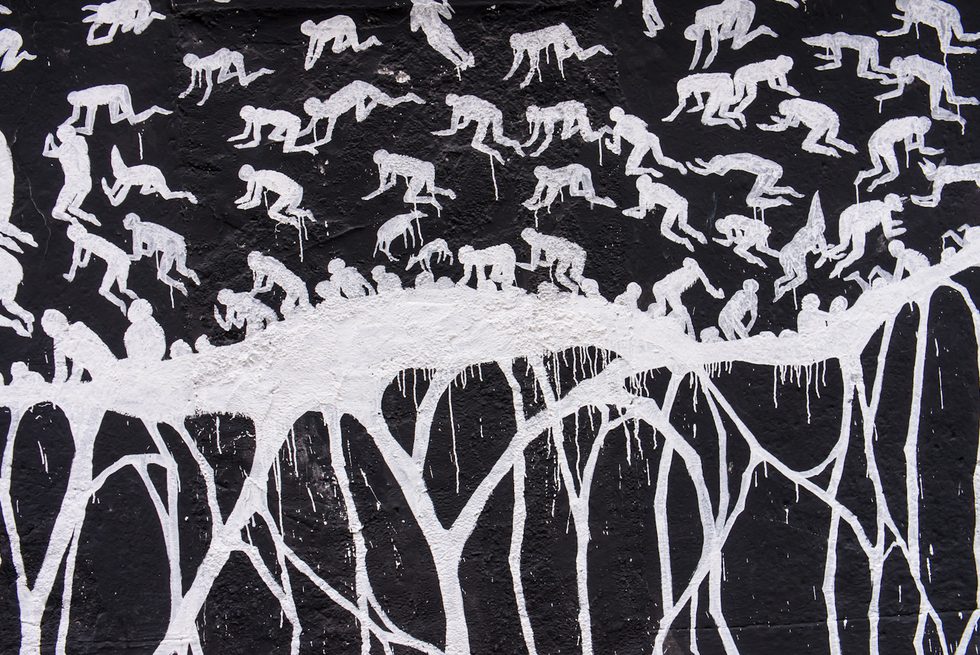Translation: Temporality and Memory
From the Series: The Politics of Memory
From the Series: The Politics of Memory

Like most anthropologists I work at the intersection of a number of languages. Moving between them in my reading/writing as well as dreaming has taught me that the act of translation is never seamless. Subtleties, sensations, layers of history and cultural meanings must be accounted for and very often the result is only barely satisfactory. It is in this vein that I offer the following reflections on Rosalind Shaw’s “Provocation.” I take this short blog entry as an invitation for dialogue but also as a way to think between and in the entanglements of languages, historical and cultural contexts, and memory landscapes.
Temporality and memory
Shaw describes how the recounting of traumas in circumscribed spaces like truth commission hearings allows those testifying to return to the period of violence, to re-set the clock so as to chart a new course for the nation-state. The time of war becomes the moment of origin and it is from that moment that a new—yet undefined—linear temporality (and future) can emerge.
This temporal break that sets the clock anew is one that has been extensively discussed in trauma theory. It is a time that gets repeated, retold, and re-experienced, capturing in its entangled web the victims (and perpetrators) of the traumatic act. But it is not only these individuals who are caught in the repetition compulsion; rather, as the term “synchronization” implies it is the nation- state itself that gets caught in the web. And if we follow this line of reasoning we might rightly ask – what kind of future can a nation-state construct when it is destined to return (eternally) to that “zero-time” of war and human rights crimes?
First translation: human rights activists in Buenos Aires, Argentina, often told me that the dictatorial rule (1976-1983) was not a singular event. Crimes, mass killings, censorship, though practiced on a much larger scale during the dictatorship, have plagued the country for decades. They often traced a genealogy of dictatorships and massacres reaching back in time to the mass killing of the Indian population at the founding moment of the nation-state. But while the narrative—and the temporality it harbored—appeared linear, it was repeatedly disrupted by outside forces. Ideologies and practices from other contexts—for example, the Spanish Civil War and the French war in Algeria—informed and disrupted the linear temporal flow of national atrocities, producing alternative temporalities that looped back and shot forward in time.
The synchronization of victim/perpetrators’ narratives and institutional narratives points towards a future. But what kind of future might that be? In answering this question I cannot help but feel that the intertwining of temporality and memory requires that we consider one more element—imagination (see Sneath, Holbraad, and Pedersen 2009). What kinds of futures do societies ravaged by violence imagine? Where are these individual/collective imaginations formed and where are they enacted? Do institutions like truth commissions or Child Protection Agencies, or, for that matter, courts where legal prosecutions are enacted open up enough space for the imagination to develop and thrive?
Second translation: Again human rights activists and other citizens involved in commemoration work in Buenos Aires might provide a different take on this work of future making. Among the children of the disappeared, who in the mid-1990s founded the human rights organization H.I.J.O.S. (sons and daughters for identity and justice, against oblivion and silence), the future was projected through a reconsideration of the past and through creative attempts at forging social solidarity. The escrache, a performative political demonstration that outed perpetrators of human rights violations who were living as common citizens became a key practice. In its later form it included extensive work within neighborhoods. Children of disappeared, exiled, and political prisoners would enter neighborhoods where perpetrators lived, lead collective discussions following public screening of films, organize workshops where they utilized art and music as a tool to consider the legacies of the dictatorship, and gather the neighbors to discuss their present and most pressing needs. These activities aimed to produce social solidarity (a result they often achieved) which in turn served to imagine a different/alternative future to the one produced by state institutions.
And what about resistance? Can those who are caught in the trauma of war and mass human rights violence resist the powerful “synchronization” of temporalities imposed and created by institutions such as truth commissions and courts of law? What form(s) do these resistances, if they exist, take?
Third translation: In the Argentine context documentary and fiction filmmaking has opened up spaces for resistance. Not only creating prosthetics memories (Landsberg 2004) the films can also provide a place to experiment with alternative temporalities that are non-linear and non-modern (i.e., not moving from the past towards the future). The result is not always coherent from the audiences’ point of view but nonetheless it offers an alternative to the overpowering linear temporalities that aim at particular futures.
Translations always leave a residue, an unexplored layer of history that cannot be captured in the move between languages. In considering these residues I wonder what we might learn by tracing the layered residues of our own anthropological explorations of the temporalities and memories of others?
Sneath, David, Martin Holbraad, and Morten Axel Pedersen. 2004, “Technologies of the Imagination: An Introduction”. Ethnos 74(1): 5-30.
Landsberg, Alison. 2004. Prosthetic Memory: The Transformation of American Remembrance in the Age of Mass Culture. New York: Columbia University Press.